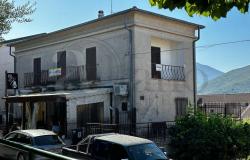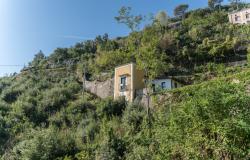A wooden carving of the crucified Christ attributed to Michelangelo has reached Naples in the latest stage of a round-Italy tour that has seen it draw crowds in Rome, Palermo, Trapani and Milan.
The small wooden cross, whose geometric proportions have been likened to those of Leonardo's famous Vitruvian Man, arrived in the southern Italian city Thursday night.
It will be on show at the Museo Diocesano di Largo Donnaregina until July 12.
''This is the fifth stage of a tour that unites Italians in the name of their historical and cultural values,'' said Culture Undersecretary Francesco Giro, unveiling the show.
Regional Tourism Chief Claudio Velardi said he hoped the cross would have the same success as in the other cities, where it attracted thousands of visitors.
Naples Archbishop Crescenzio Sepe underscored the importance of the event in ''spotlighting the culture of our people, religious and otherwise''.
''Naples is still one of (Italy's) cultural capitals, with a heritage that must be boosted''.
The rediscovered Michelangelo cross drew some 30,000 people to the Chamber of Deputies in January and comparable crowds in Palermo and Trapani in March.
On April 3 it left Sicily for Milan where, at the Castello Sforzesco, it was reunited with Michelangelo's famous Pieta' Rondanini, a glory of the artist's later years.
''Finally the young and the mature Michelangelos have been able to talk to each other,'' Culture Minister Sandro Bondi said at the start of a month-long show that was the biggest hit so far.
After its tour, in July, the cross is expected to find a permanent home in Florence's Bargello museum.
CROSS DISCOVERED FOUR YEARS AGO.
The limewood cross, which only came to light four years ago, was bought from a Turin art dealer in December in one of the Italian state's highest-profile acquisitions in years.
The state paid the arts dealer, Giancarlo Gallino, 3.25 million euros for the work - an exceptionally low price made possible by past disputes on its authenticity.
Art expert Vittorio Sgarbi, a supporter of the attribution against persistent skeptics, said the state had ''effectively got a Michelangelo at the price of a Sansovino''.
The carving made its first-ever public appearance in Florence in 2004, shortly after its new attribution.
It was displayed for four months at the Tuscan city's Horne Museum before returning to Gallino's collection.
Earlier that year experts attributed it to Michelangelo, who lived from 1475 to 1564.
It was dated to 1495, when the artist was 20.
The experts were convinced by the style of the piece rather than documentation.
The 41.3cm carving was assessed by a mixed team of professors and scientists from Florence, Siena and Perugia universities, who tested it with CAT scans and examined it for the anatomical accuracy for which Michelangelo was renowned.
They reported that the posture, bones and musculature were ''perfectly in keeping with the body of a 30-year-old man who had died less than 48 hours previously''.
While Michelangelo is traditionally known for the daunting scale of his pieces, Perugia University's Giancarlo Gentilini said it was plausible he would have created such a small, detailed sculpture during this period.
''The young Michelangelo had close ties to the circle of (Florentine monk Girolamo) Savonarola, which was responsible for the spread of these small crucifixes,'' the professor noted.
''There would have been plenty of opportunities to carve such images and it's very likely that one of his principal customers, the Dominican monks in Bologna or Lorenzo di Pierfrancesco de Medici, would have requested one''.








